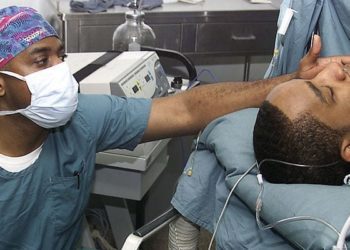The Yang-Tobin Index: A Key Predictor for Successful Extubation in Critical Care
Why the Yang-Tobin Index Matters
Determining the right time to extubate a critically ill patient remains one of the most challenging decisions in intensive care units (ICUs). The Yang-Tobin index, also known as the Rapid Shallow Breathing Index (RSBI), provides a straightforward bedside measure by dividing respiratory rate by tidal volume in liters. Since its introduction in 1991, it has been widely used to assess readiness for ventilator liberation. The simplicity and reproducibility of the index have ensured its role in daily practice, especially in high-acuity ICUs where clinicians need rapid, objective measures to guide decision-making.
Evidence to Date
The RSBI quickly demonstrated value as a predictor of extubation success and was incorporated into many protocols alongside spontaneous breathing trials (SBTs). While not perfect, the index offers clinicians a noninvasive, easy-to-calculate parameter that avoids complex equipment or costly monitoring. Studies have shown that RSBI is especially helpful as a screening test—when values are favorable, patients are more likely to succeed in extubation, but borderline or high values require broader clinical context. Importantly, it remains most accurate when used with other indicators, including hemodynamic stability and neurologic assessment.
Ongoing Debates and Research
One limitation of the Yang-Tobin index is its reduced specificity in patients with chronic obstructive pulmonary disease (COPD), neuromuscular weakness, or altered metabolic demands. Researchers have explored integrative weaning indexes that combine multiple parameters, but none have replaced RSBI’s utility and accessibility. The index’s predictive value has also been studied in pediatric and surgical ICU populations, where adaptation may be necessary. Clinicians should remember that while RSBI is a useful tool, extubation outcomes are multifactorial, and no single number can replace the art of bedside assessment.
Clinical Guidance for Physicians
RSBI should be applied as part of a structured protocol, ideally in combination with SBTs. When results are borderline, caution is warranted, and clinicians should consider supportive measures such as high-flow nasal oxygen or noninvasive ventilation post-extubation. The goal is not to treat RSBI as an absolute threshold but as one of several indicators that guide a safe and patient-centered approach to weaning.
Bottom Line
The Yang-Tobin index remains a cornerstone of ventilator weaning protocols more than three decades after its introduction. Its strengths lie in simplicity and bedside utility, but it is most effective when paired with clinical judgment and other readiness markers. Physicians should continue to view RSBI as a guidepost, not a stand-alone decision maker, in the complex process of extubation.
To read about how Amikacin prevents ventilator-associated pneumonia in mechanically ventilated patients, click here
Image: PD
©2025 2 Minute Medicine, Inc. All rights reserved. No works may be reproduced without expressed written consent from 2 Minute Medicine, Inc. Inquire about licensing here. No article should be construed as medical advice and is not intended as such by the authors or by 2 Minute Medicine, Inc.









